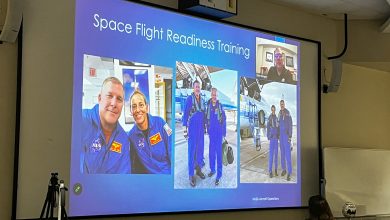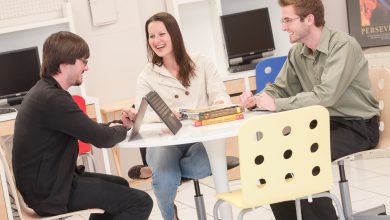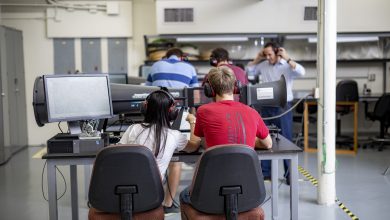Florida Tech and International Collaboration to Solve Mysteries of Universe
MELBOURNE, FLA. — Florida Institute of Technology faculty members and students are among thousands of scientists from almost 50 nations poised to explore the
fundamental forces of the universe and the basic nature of matter this fall.
Professors Marc Baarmand and Laszlo Baksay and Associate Professor Marcus Hohlmann of the Department of Physics and Space Sciences are eagerly anticipating
the dawn of a new era of research facilitated by the projected early-September switch-on of the Large Hadron Collider (LHC), the world’s highest-energy
particle accelerator with a cost of nearly $10 billion. The event will be heralded around the globe as the culmination of more than a decade of
construction and preparation.
The European Organization for Particle Physics (CERN) houses the LHC in a 17-mile-long tunnel 300 feet beneath the earth of the France-Switzerland border.
The LHC comprises four elementary particle detectors — ALICE, ATLAS, CMS, and LHCb, which will study proton-proton and heavy ion collisions.
The Florida Tech team’s efforts and research, in collaboration with other universities, are on the compact muon solenoid (CMS) experiment. The gigantic
experiment, the size of a five-story building and weighing more than 12,000 tons, encompasses several million electronic readout channels that record data
on proton-proton collisions every 25 billionth of a second.
Florida Tech joined the CMS experiment in 2001. Baarmand is a CMS charter member and is the Florida Tech representative to the CMS Collaboration Board.
In the CMS, Baarmand, research associate Igor Vodopiyanov and graduate students Hamit Mermerkaya and Mike Ralich have built a laser and LED light
calibration system for the forward hadron calorimeters. Hohlmann and graduate students Samir Guragain and Himali Kalakhety have constructed a precision
alignment system for the muon detectors using a variety of analog and optical sensors.
Back on campus the preparation for the momentous data collection continues. In addition to various instruments, the campus High Energy Physics laboratories
house a state-of-the art, student-built, Linux-based computing cluster, part of the Open Science Grid for CMS data analysis. Following the first
collisions, expected in November, Hohlmann and graduate students will conduct a search for new gauge bosons.
“If a new gauge boson is found,” said Hohlmann, “this would indicate a new force of nature besides gravity, electromagnetism and nuclear forces.” Baarmand
and his team will focus on measurements of the properties of the top and bottom quarks. “We are currently conducting physics simulations to prepare for the
arrival of real data this fall,” said Baarmand. “We’re also monitoring data quality and data flow over the various sites on the CMS grid network.”
Faculty and students alike are anxious to begin collecting and analyzing physics data from the CMS. They’re ready to open this new door for exploring the
world of tiny particles and their interactions that could just unlock the huge mysteries of the universe.




